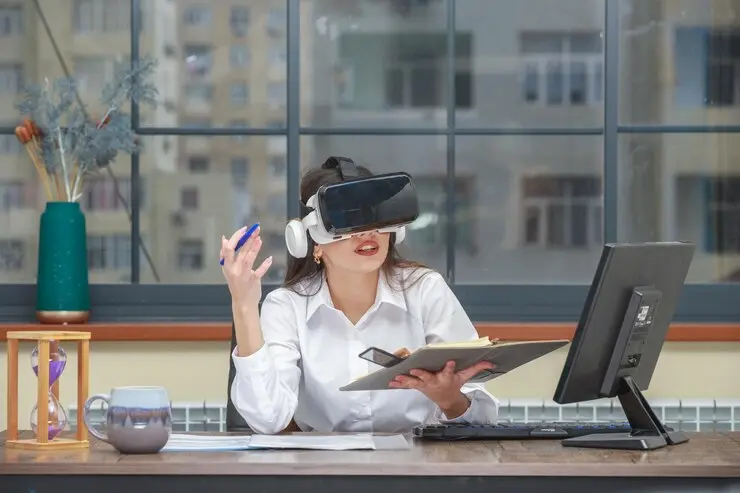Introduction: Embracing the Augmented Future
Welcome to the exciting world of Augmented Reality (AR) in the workplace! Imagine walking into your office and, with just a pair of glasses, accessing a realm where digital information blends seamlessly with your physical environment. AR is not just a futuristic concept; it’s a present-day tool transforming how we work, collaborate, and innovate. In this article, we’ll explore the ins and outs of AR in the workplace, its benefits, challenges, and what the future holds.
1. Understanding Augmented Reality: More Than Just Holograms
Before diving into the applications of AR at work, let’s break down what it actually is. Augmented Reality overlays digital information – like images, data, and even sounds – onto the real world. Unlike Virtual Reality (VR), which creates a completely virtual environment, AR enhances your real-world surroundings, making it an incredible tool for real-time information and interaction.
2. AR in Training and Education: A Game Changer
AR is revolutionizing the way employees are trained. Imagine technicians viewing a machine and getting step-by-step repair instructions projected right in front of them. Or medical students practicing surgeries with 3D models. This hands-on approach leads to better understanding, retention, and practical skills without the risks involved in real-life training.
3. Enhanced Collaboration: Breaking Physical Boundaries
AR is breaking down geographical barriers, enabling global teams to work together as if they’re in the same room. With AR, team members can interact with 3D models or data visualizations in a shared virtual space, enhancing collaboration, creativity, and decision-making processes.
4. Improving Productivity and Efficiency
Augmented Reality streamlines workflows by providing instant access to data and instructions. Imagine warehouse workers scanning items to instantly view inventory information or engineers visualizing a building’s architectural plans on-site. This integration of digital information with the physical world boosts productivity and minimizes errors.
5. Customer Service and Experience: A New Dimension
AR is also transforming customer service. For example, furniture companies allow customers to visualize how a piece would look in their home before purchasing. Similarly, car dealerships use AR to show customers different car features and customizations. This interactive experience leads to higher customer satisfaction and engagement.
6. Health and Safety in the Workplace
In hazardous work environments, AR can provide real-time safety information, alerting workers to potential dangers. For construction workers, AR can highlight unsafe areas on a site, while factory workers can get alerts about malfunctioning equipment, enhancing workplace safety.
7. The Challenges: Privacy, Cost, and Adaptation
However, integrating AR in the workplace isn’t without challenges. Privacy concerns, high implementation costs, and the need for employee adaptation are significant hurdles. Organizations must address these issues head-on to fully harness the benefits of AR.
8. The Future of AR in the Workplace: Endless Possibilities
The future of AR in the workplace is bright and full of potential. From more immersive training and collaboration to enhanced customer experiences and productivity, the possibilities are endless. As technology advances, we can expect AR to become more sophisticated, accessible, and integral to our daily work lives.
9. Conclusion: A Step Towards an Augmented Tomorrow
Augmented Reality is more than a technological marvel; it’s a tool that’s reshaping the workplace. As we embrace this technology, we step into a future where work is more efficient, collaborative, and engaging. The journey towards an augmented workplace is just beginning, and it promises to be an exciting one.
